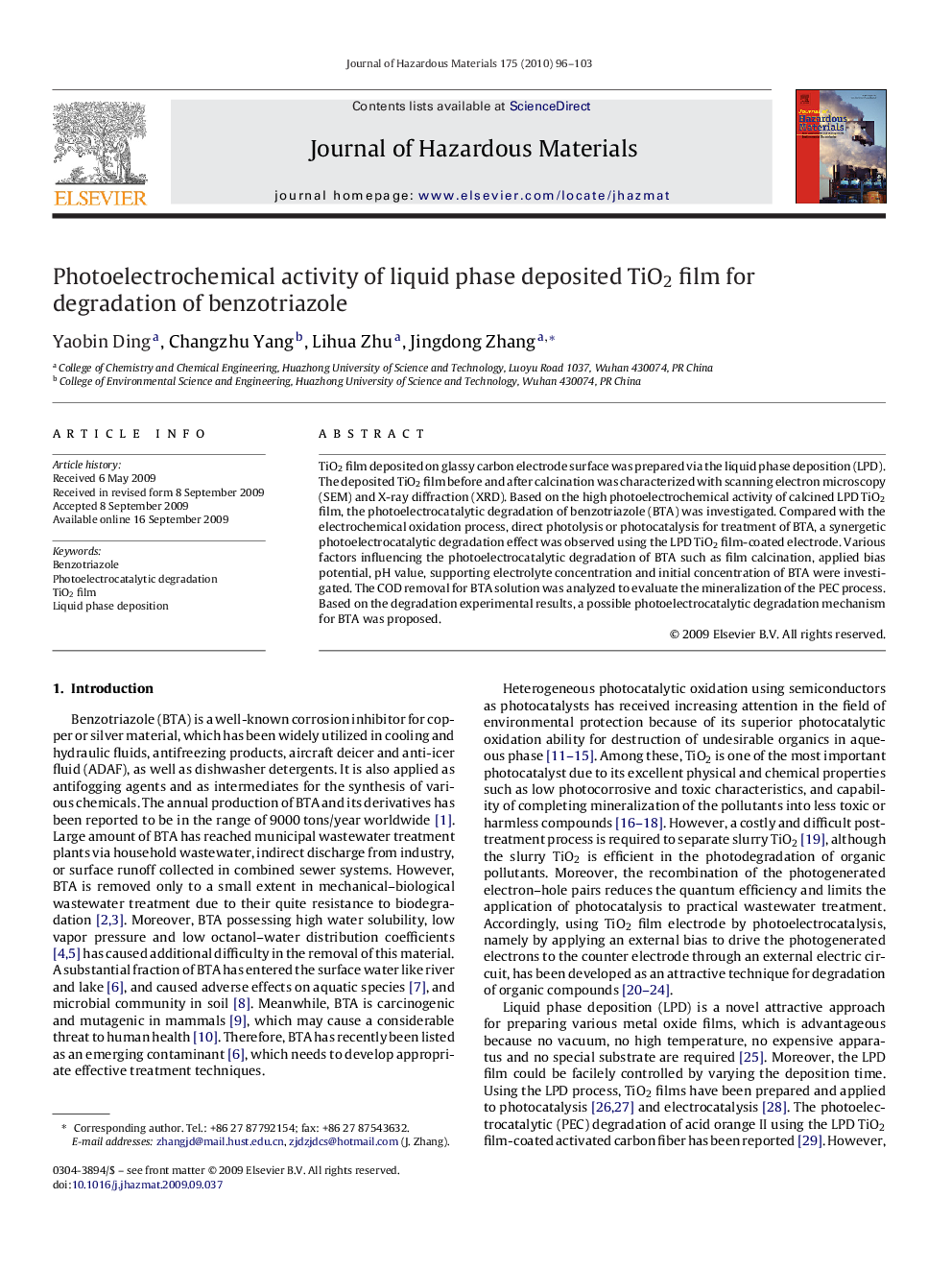| Article ID | Journal | Published Year | Pages | File Type |
|---|---|---|---|---|
| 580432 | Journal of Hazardous Materials | 2010 | 8 Pages |
Abstract
TiO2 film deposited on glassy carbon electrode surface was prepared via the liquid phase deposition (LPD). The deposited TiO2 film before and after calcination was characterized with scanning electron microscopy (SEM) and X-ray diffraction (XRD). Based on the high photoelectrochemical activity of calcined LPD TiO2 film, the photoelectrocatalytic degradation of benzotriazole (BTA) was investigated. Compared with the electrochemical oxidation process, direct photolysis or photocatalysis for treatment of BTA, a synergetic photoelectrocatalytic degradation effect was observed using the LPD TiO2 film-coated electrode. Various factors influencing the photoelectrocatalytic degradation of BTA such as film calcination, applied bias potential, pH value, supporting electrolyte concentration and initial concentration of BTA were investigated. The COD removal for BTA solution was analyzed to evaluate the mineralization of the PEC process. Based on the degradation experimental results, a possible photoelectrocatalytic degradation mechanism for BTA was proposed.
Related Topics
Physical Sciences and Engineering
Chemical Engineering
Chemical Health and Safety
Authors
Yaobin Ding, Changzhu Yang, Lihua Zhu, Jingdong Zhang,
